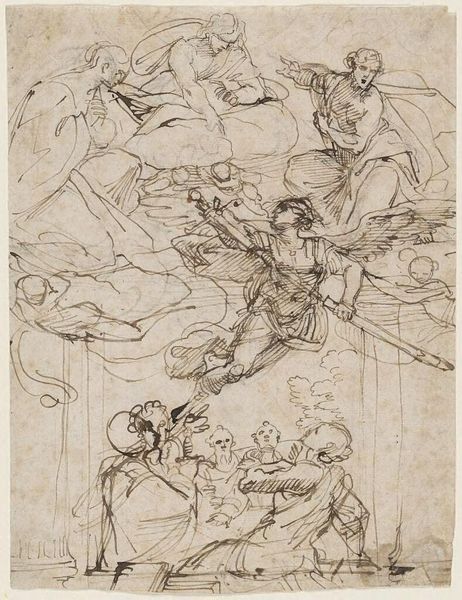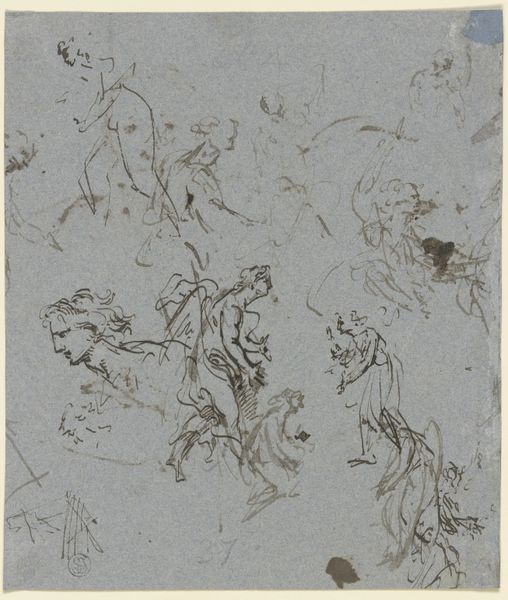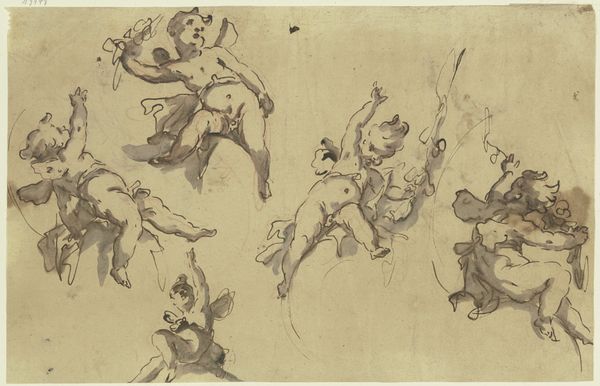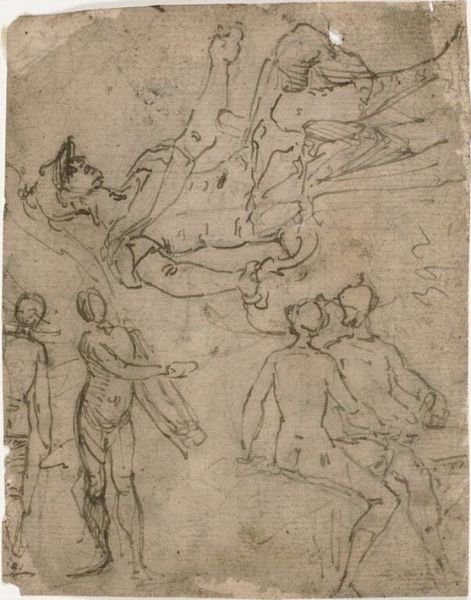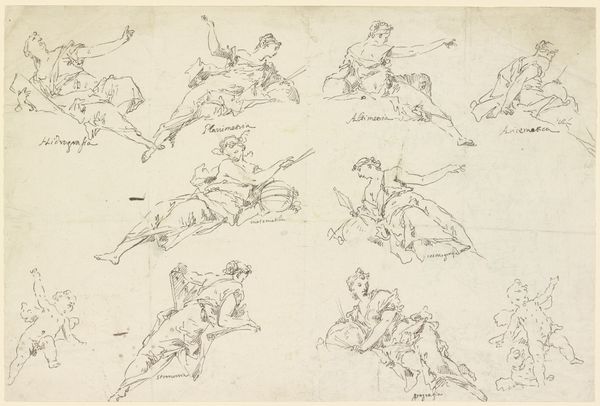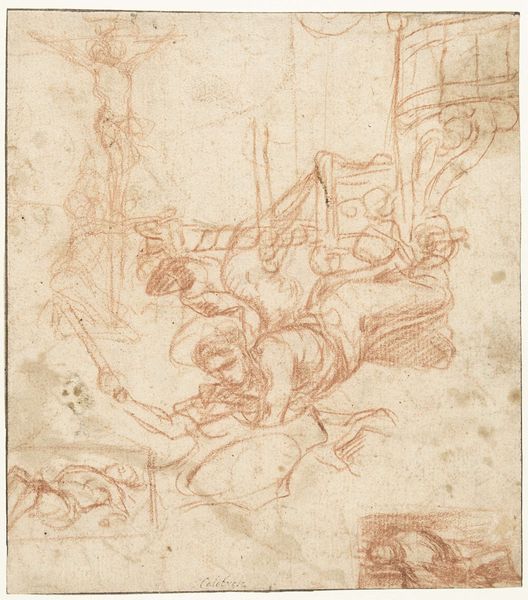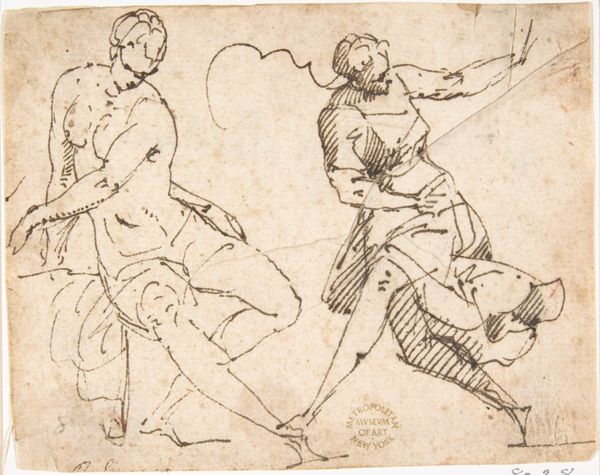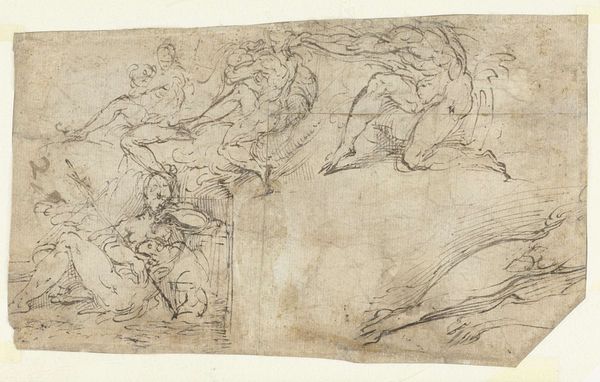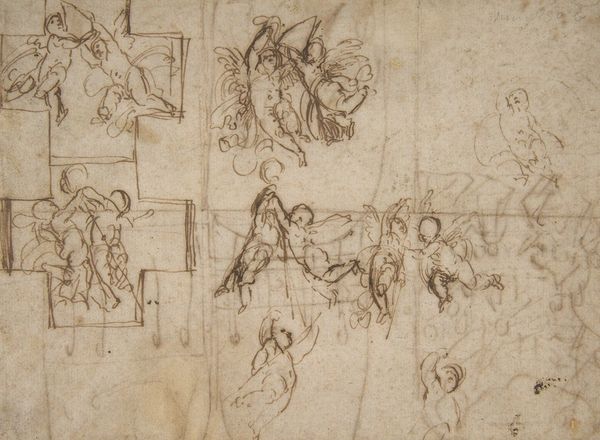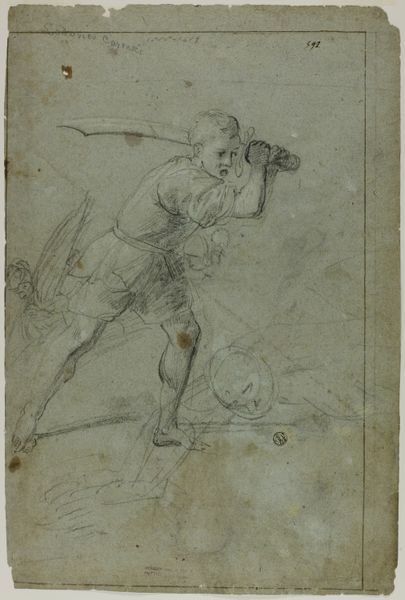
drawing, print, paper, ink, chalk, black-chalk
#
drawing
# print
#
pencil sketch
#
figuration
#
paper
#
11_renaissance
#
ink
#
chalk
#
italian-renaissance
#
black-chalk
Dimensions: 288 × 215 mm
Copyright: Public Domain
Curator: This is Aurelio Luini's "Studies for Prophets in Spandrels," a drawing rendered around 1555, now held at The Art Institute of Chicago. It is rendered in ink and chalk on paper. Editor: The initial impression is a flurry of dynamism—the figures are caught in motion, seemingly constrained by these curved, geometric shapes. There is an interesting tension between their anatomical freedom and architectural restriction. Curator: Indeed, the 'spandrels' here, those architectural spaces between arches or between an arch and a rectangular enclosure, significantly shape our reading of the figures. Luini’s preparatory sketches open questions about representation, gendered religious expectations, and the role of prophets, particularly within the historical framework of Renaissance thought. Editor: Absolutely. Look closely at the line work. The deliberate, almost frenetic hatching and cross-hatching to model form is amazing, creating dramatic shadows. This creates a very complex, layered surface with significant depth. What narrative or emotional tone might be derived? Curator: Luini created the bodies, yet his creative liberties seem bound, literally and figuratively, to predefined spaces within church structure, pointing towards societal and patriarchal restraints that influenced even divine inspiration and autonomy during the 16th century. This reflects the role prophets were afforded – sometimes honored, sometimes marginalized for their messages. Editor: You’re drawing an interesting comparison. The composition echoes, but simultaneously struggles against, these self-imposed formal boundaries—a dialogue perhaps? Curator: Perhaps that's the most interesting takeaway here: the figures feel not wholly independent, but actively molded, constrained, interpreted… even performed within structural narratives larger than themselves. Editor: The formal rigor provides us with an incredible view into an artist’s working process and intellectual architecture of meaning-making within set frameworks. Curator: Viewing these figures now allows us to examine how cultural scripts can confine, but also provide the framework that paradoxically enables prophetic voices in the first place. Editor: And the brilliance of Luini is providing a record, or at least a glimpse, into the artistic problem solving of the period through raw skill.
Comments
No comments
Be the first to comment and join the conversation on the ultimate creative platform.
